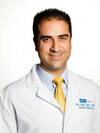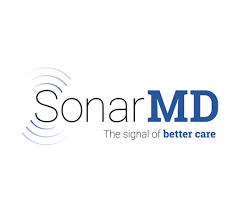Access to capital enables practitioners to adopt innovative care delivery models such as telemedicine, remote patient monitoring, and preventive health...
Benefits of using ABA software for client data management
 Implementing ABA practice management software brings significant benefits to managing client data. This software streamlines administrative tasks, allowing therapists to focus more on delivering quality care. By centralizing client information, practice management solutions enhance both efficiency and organizational workflow.
Effective softwares, such as an ABA practice management solution from Theralytics, has comprehensive features for tracking client progress and history. Securely storing client records in a centralized location not only simplifies data access but also improves communication and coordination among staff.
By leveraging such software, practices can utilize data to achieve superior therapeutic outcomes. Automated data collection and analysis foster better decision-making, leading to improved treatment plans and client satisfaction. The integration of these tools is crucial for maintaining high standards of care in ABA therapy.
Implementing ABA practice management software brings significant benefits to managing client data. This software streamlines administrative tasks, allowing therapists to focus more on delivering quality care. By centralizing client information, practice management solutions enhance both efficiency and organizational workflow.
Effective softwares, such as an ABA practice management solution from Theralytics, has comprehensive features for tracking client progress and history. Securely storing client records in a centralized location not only simplifies data access but also improves communication and coordination among staff.
By leveraging such software, practices can utilize data to achieve superior therapeutic outcomes. Automated data collection and analysis foster better decision-making, leading to improved treatment plans and client satisfaction. The integration of these tools is crucial for maintaining high standards of care in ABA therapy.
Key Takeaways
- ABA software enhances data management and administrative efficiency.
- Centralized information improves workflow and coordination.
- Leveraging data from software leads to better therapeutic outcomes.
5 Types of Hospital Negligence That Lead to Compensation Claims in the UK
Understanding the common types of hospital negligence can help individuals recognize when they may have a valid compensation claim...
Athena and Luminello EMR Aim to Revamp HealthCare Administration
A Look into the Key Attributes: Transforming Healthcare Operations
It is imperative to gain useful insights into why both systems stand out in healthcare administration. At this point, we will reveal the integral capabilities and functionalities of Luminello and Athena, shedding light on the outstanding potential of these EMR virtuosos. This will help you better understand why you need to incorporate a healthcare platform. (more…)From Clicks to Care: How Online Platforms Are Speeding Up Patient Service
Enhancing Patient Engagement Through Strategic Digital Integration
Leveraging SEO for Improved Patient Information Accessibility
The strategic use of digital platforms in healthcare, particularly through search engine optimization (SEO), significantly enhances how medical practices engage with patients. SEO is crucial in making educational content easily discoverable online, thereby ensuring that when patients seek information about their conditions or potential treatments, the resources provided by advanced platforms like CheckedUp are readily available.Pre-Visit Patient Education via Optimized Content
Digital platforms not only facilitate direct patient education but also play a pivotal role in how this content is structured and presented online. By optimizing content for search engines, practices can ensure higher visibility and accessibility, allowing patients to obtain necessary medical knowledge before their consultations. This approach not only improves the efficiency of in-person visits but also empowers patients, making them proactive participants in their healthcare journey. (more…)US Healthcare Staffing Market to be Worth $26.97 Billion by 2031
The Rise in Demand for Healthcare Professionals
 The booming healthcare staffing market is driven by an increasing demand for medical practitioners. The US is grappling with a shortage of healthcare workers, including doctors, nurses, and allied health professionals - over 340,000 combined professionals are needed, including doctors and nurses. The issue is, that as more baby boomers retire, they often become more reliant on medical services, putting pressure on an already understaffed industry.
But the issue also is that the demand for healthcare staff isn't being met. The US and the UK both use overseas staff to fill the numbers. The people training to be nurses in the US are becoming travel nurses, aesthetic practitioners, and basically avoiding the main healthcare system. Well, not all of them, but a big chunk are. The US has no choice but to rely on outsourced agencies like physician staffing companies.
(more…)
The booming healthcare staffing market is driven by an increasing demand for medical practitioners. The US is grappling with a shortage of healthcare workers, including doctors, nurses, and allied health professionals - over 340,000 combined professionals are needed, including doctors and nurses. The issue is, that as more baby boomers retire, they often become more reliant on medical services, putting pressure on an already understaffed industry.
But the issue also is that the demand for healthcare staff isn't being met. The US and the UK both use overseas staff to fill the numbers. The people training to be nurses in the US are becoming travel nurses, aesthetic practitioners, and basically avoiding the main healthcare system. Well, not all of them, but a big chunk are. The US has no choice but to rely on outsourced agencies like physician staffing companies.
(more…)How COVID-19 Has Changed Medical Research in Global Health
 COVID-19 is a virus that devastated the healthcare systems around the globe. The main reason for this devastation was the speed of the spreading. Because it was spreading so fast, hospitals weren’t able to accommodate so many patients.
We needed to figure out a better approach to dealing with the pandemic. So, this is where most of the people on Earth stood together by being apart. We were in lockdown, but our scientists and governments collaborated more on finding the right solution.
COVID-19 is a virus that devastated the healthcare systems around the globe. The main reason for this devastation was the speed of the spreading. Because it was spreading so fast, hospitals weren’t able to accommodate so many patients.
We needed to figure out a better approach to dealing with the pandemic. So, this is where most of the people on Earth stood together by being apart. We were in lockdown, but our scientists and governments collaborated more on finding the right solution.
What Was the COVID-19 Impact on Research Priorities?
One of the major impacts of the pandemic was the speed of research. Because of the urgency and the need for a quick response, research was focused on the COVID-19 virus and therapy and vaccine development for it. The development of vaccines was heavily prioritized, but this does not imply that it is not being done presently. Epidemiology and therapeutic regimens continue to see some initiatives. However, research remains a priority with ongoing trials on many things you can participate in (link to site). This required a lot of funding and resources, so governments, private sectors, and international organizations collaborated and helped out the research process. We’ve proven that we can adapt in no time, and respond to great threats effectively and swiftly. (more…)5 Reasons Why Pursuing Medical Administrative Credentials is Worthwhile
Working in the healthcare sector, even in an administrative capacity, allows you to make a meaningful impact on patient care...
DDW2024: SonarMD Program Reduced ER Visits and Health Care Costs for IBD Patients
Ongoing education is the backbone of a robust safety culture. Regular safety training sessions ensure that all employees are up-to-date...
Leading with Empathy in the Healthcare Sector
The Impact of Technological Advancements
 As technology continues to evolve within the healthcare sector, creating new opportunities for enhancing patient care, it's crucial that empathy doesn't get lost in the shuffle. Innovative tools and systems should be seen as avenues to deepen our understanding and connection with patients, rather than as barriers to the human touch. Embracing technology with empathetic intention can lead to an even greater level of personalized care.
One specific area where empathy can play a transformative role is in addressing HR challenges in behavioral health. Understanding the unique nature of these challenges, and the emotional toll they can take on staff, is crucial for leaders who strive to create a supportive work environment. This deeper understanding can drive the implementation of effective solutions, fostering a workplace where empathy and professionalism thrive together.
(more…)
As technology continues to evolve within the healthcare sector, creating new opportunities for enhancing patient care, it's crucial that empathy doesn't get lost in the shuffle. Innovative tools and systems should be seen as avenues to deepen our understanding and connection with patients, rather than as barriers to the human touch. Embracing technology with empathetic intention can lead to an even greater level of personalized care.
One specific area where empathy can play a transformative role is in addressing HR challenges in behavioral health. Understanding the unique nature of these challenges, and the emotional toll they can take on staff, is crucial for leaders who strive to create a supportive work environment. This deeper understanding can drive the implementation of effective solutions, fostering a workplace where empathy and professionalism thrive together.
(more…)UCLA Study Finds Patients Treated By Female Physicians Have Better Outcomes and Fewer Readmissions
 When you visit your doctor, you expect to receive accurate diagnoses and appropriate treatment. However, medical professionals can sometimes make mistakes that have serious consequences for patients. If you believe you have been the victim of a misdiagnosis in Virginia, you may be wondering about your legal options. Can you sue your doctor for a wrong diagnosis?
Consider the hypothetical case of Sarah, a hardworking professional plagued by persistent fatigue and headaches. After a series of tests with ambiguous results, her physician diagnoses her with chronic fatigue syndrome. Feeling a sense of relief at finally having an answer, Sarah diligently follows the recommended treatment plan and makes significant lifestyle changes. Despite her efforts, her health continues to deteriorate. Seeking a second opinion, Sarah discovers that she actually has a tumor which, while treatable, has gone undetected and caused substantial harm. Sarah's story illustrates the potentially devastating impact of a misdiagnosis, leaving her with both emotional trauma and severe medical issues.
(more…)
When you visit your doctor, you expect to receive accurate diagnoses and appropriate treatment. However, medical professionals can sometimes make mistakes that have serious consequences for patients. If you believe you have been the victim of a misdiagnosis in Virginia, you may be wondering about your legal options. Can you sue your doctor for a wrong diagnosis?
Consider the hypothetical case of Sarah, a hardworking professional plagued by persistent fatigue and headaches. After a series of tests with ambiguous results, her physician diagnoses her with chronic fatigue syndrome. Feeling a sense of relief at finally having an answer, Sarah diligently follows the recommended treatment plan and makes significant lifestyle changes. Despite her efforts, her health continues to deteriorate. Seeking a second opinion, Sarah discovers that she actually has a tumor which, while treatable, has gone undetected and caused substantial harm. Sarah's story illustrates the potentially devastating impact of a misdiagnosis, leaving her with both emotional trauma and severe medical issues.
(more…)Enhancing Accuracy and Precision
 Skilled medical scribing entails meticulous transcription of patient encounters, procedures, or treatment plans from spoken word into written text, capturing every detail and nuance. Transcription is a pivotal tool for ensuring that the physician follows the proper procedure and that medical records, reports, and documentation have perfect levels of accuracy.
Medical scribing is a skilled profession that requires solid knowledge of the worker's chosen healthcare field. Any misinterpretation of patient information has the potential to lead to ill-informed future decisions regarding a patient's health.
Healthcare organisations must also adhere to strict guidelines regarding the documentation of patient care, billing processes, and confidentiality protocols. Skilled medical scribes with specialised knowledge and expertise in their industry can protect organisations from costly lawsuits and ensure that patients are treated with the correct level of integrity.
In today's world, time is money. Successful medical scribes improve efficiency and take the burden off physicians having to personally record data, enabling them to see more patients and listen more attentively, ultimately contributing to reaching the healthcare company's overall productivity and financial aims.
One study found that medical scribes cut costs by $31.15 per hour, with no risk added risk to patient safety.
(more…)
Skilled medical scribing entails meticulous transcription of patient encounters, procedures, or treatment plans from spoken word into written text, capturing every detail and nuance. Transcription is a pivotal tool for ensuring that the physician follows the proper procedure and that medical records, reports, and documentation have perfect levels of accuracy.
Medical scribing is a skilled profession that requires solid knowledge of the worker's chosen healthcare field. Any misinterpretation of patient information has the potential to lead to ill-informed future decisions regarding a patient's health.
Healthcare organisations must also adhere to strict guidelines regarding the documentation of patient care, billing processes, and confidentiality protocols. Skilled medical scribes with specialised knowledge and expertise in their industry can protect organisations from costly lawsuits and ensure that patients are treated with the correct level of integrity.
In today's world, time is money. Successful medical scribes improve efficiency and take the burden off physicians having to personally record data, enabling them to see more patients and listen more attentively, ultimately contributing to reaching the healthcare company's overall productivity and financial aims.
One study found that medical scribes cut costs by $31.15 per hour, with no risk added risk to patient safety.
(more…)Remote Patient Monitoring for Effective Heart Disease Management
Quality Care Revolutionaries
 The seminal Institute of Medicine's “To Err Is Human” publication sounded alarms in 1999 about the silent epidemic of American medical errors contributing to nearly 98,000 annual deaths. With time, the stakes intensified for systemic improvement. Nurse leadership emerged, accelerating cultural transformations and pioneering processes that saved countless lives.
Take Children’s Hospital Solutions for Patient Safety Network (SPS), for example. Founded by nurse scientist Marlene Miller in 2001, it aims to unite children’s hospitals to develop evidence-based harm reduction tactics and tools.
By adopting the best practices across their network, their hospitals are making significant strides in preventing serious harm. As of November 2023, this nationwide network of child healthcare has spared over 25,000 children from harm, resulting in an estimated cost savings of $500 million.
Similarly, medical experts around the world credit ICU nurses’ relentless systems analysis and testing of solutions during the COVID-19 pandemic for lifting outcomes.
(more…)
The seminal Institute of Medicine's “To Err Is Human” publication sounded alarms in 1999 about the silent epidemic of American medical errors contributing to nearly 98,000 annual deaths. With time, the stakes intensified for systemic improvement. Nurse leadership emerged, accelerating cultural transformations and pioneering processes that saved countless lives.
Take Children’s Hospital Solutions for Patient Safety Network (SPS), for example. Founded by nurse scientist Marlene Miller in 2001, it aims to unite children’s hospitals to develop evidence-based harm reduction tactics and tools.
By adopting the best practices across their network, their hospitals are making significant strides in preventing serious harm. As of November 2023, this nationwide network of child healthcare has spared over 25,000 children from harm, resulting in an estimated cost savings of $500 million.
Similarly, medical experts around the world credit ICU nurses’ relentless systems analysis and testing of solutions during the COVID-19 pandemic for lifting outcomes.
(more…)New study finding $14.2 million in undisclosed conflicts of interest in the “bible” of psychiatry (DSM-5-TR) published in the British Medical Journal
 Lauren C. Davis, MBS
Department of Medical Education
Geisinger Commonwealth School of Medicine
Scranton, PA 19409
MedicalResearch.com: What is the background for this study?
Response: Financial conflicts of interest (COIs) resulting from ties between academia and industry have been under scrutiny for their potential to hinder the integrity of medical research. COIs can lead to implicit bias, compromise the research process, and erode public trust (1-6). The American Psychiatric Association’s Diagnostic and Statistical Manual of Mental Disorders (DSM), standardizes symptom criteria and codifies psychiatric disorders. This manual contributes to the approval of new drugs, extensions of patent exclusivity, and can influence payers and mental health professionals seeking third-party reimbursements. Given the implications of the DSM on public health, it is paramount that it is free of industry influence. Previous research has shown a high prevalence of industry ties among panel and task force members of the DSM-IV-TR and DSM-5, despite the implementation of a disclosure policy for the DSM-5 (7,8). This study (9) determined the extent and type of COIs received by panel and task-force members of the DSM-5-TR (2022) (10). As the DSM-5-TR did not disclose COI, we used the Center for Medicare and Medicaid Services Open Payments (OP) database (11) to quantify them.
(more…)
Lauren C. Davis, MBS
Department of Medical Education
Geisinger Commonwealth School of Medicine
Scranton, PA 19409
MedicalResearch.com: What is the background for this study?
Response: Financial conflicts of interest (COIs) resulting from ties between academia and industry have been under scrutiny for their potential to hinder the integrity of medical research. COIs can lead to implicit bias, compromise the research process, and erode public trust (1-6). The American Psychiatric Association’s Diagnostic and Statistical Manual of Mental Disorders (DSM), standardizes symptom criteria and codifies psychiatric disorders. This manual contributes to the approval of new drugs, extensions of patent exclusivity, and can influence payers and mental health professionals seeking third-party reimbursements. Given the implications of the DSM on public health, it is paramount that it is free of industry influence. Previous research has shown a high prevalence of industry ties among panel and task force members of the DSM-IV-TR and DSM-5, despite the implementation of a disclosure policy for the DSM-5 (7,8). This study (9) determined the extent and type of COIs received by panel and task-force members of the DSM-5-TR (2022) (10). As the DSM-5-TR did not disclose COI, we used the Center for Medicare and Medicaid Services Open Payments (OP) database (11) to quantify them.
(more…)AI Has Ability To Speed Up Medical Literature Searches, But Not All Information Reliable
Pharmacy Forecast: Paradigm Shifts in Breakthrough Therapeutics Will Challenge Existing Payment Models
New Alzheimer Drug Lecanemab and its Ancillary Services Could Cost Medicare up to 5 billion Annually
 John N. Mafi, MD, MPH
Associate Professor of Medicine
General Internal Medicine & Health Services Research
David Geffen School of Medicine at UCLA
MedicalResearch.com: What is the background for this study? What is lecanemab used for and how well does it work?
Response: Lecanemab is a treatment for mild cognitive impairment and mild dementia that was approved in January 2023 as part of the Food and Drug Administration’s (FDA) accelerated approval program. The results from a recent phase 3 clinical trial show a modest clinical benefit: the rate of cognitive decline by 27% in an 18-month study involving participants experiencing the early stage of Alzheimer’s, with an 0.45-point absolute difference in cognitive testing scores. However, due to the risk of brain swelling and bleeding (also known as amyloid-related imaging abnormalities), treatment with lecanemab involves frequent MRIs and neurology or geriatrics appointments to monitor for these abnormalities, which can be life threatening. So far, three patient deaths have potentially been tied to lecanemab.
It is likely that the FDA will grant is lecanemab traditional approval later this year, prompting Medicare to reconsider its current coverage restrictions and potentially enabling widespread use.
(more…)
John N. Mafi, MD, MPH
Associate Professor of Medicine
General Internal Medicine & Health Services Research
David Geffen School of Medicine at UCLA
MedicalResearch.com: What is the background for this study? What is lecanemab used for and how well does it work?
Response: Lecanemab is a treatment for mild cognitive impairment and mild dementia that was approved in January 2023 as part of the Food and Drug Administration’s (FDA) accelerated approval program. The results from a recent phase 3 clinical trial show a modest clinical benefit: the rate of cognitive decline by 27% in an 18-month study involving participants experiencing the early stage of Alzheimer’s, with an 0.45-point absolute difference in cognitive testing scores. However, due to the risk of brain swelling and bleeding (also known as amyloid-related imaging abnormalities), treatment with lecanemab involves frequent MRIs and neurology or geriatrics appointments to monitor for these abnormalities, which can be life threatening. So far, three patient deaths have potentially been tied to lecanemab.
It is likely that the FDA will grant is lecanemab traditional approval later this year, prompting Medicare to reconsider its current coverage restrictions and potentially enabling widespread use.
(more…)Disparity and Diversity in Non-Small Cell Lung Cancer Imaging and Genomics
ChatGPT Provided Surprising Empathetic Answers to Patient Queries
ACC23: Encouraging Findings on Mortality After Acute Heart Attack
(more…)
Patients Associate Green Scrub Color With Surgeons
Physician Weekly Work Hours Fall Especially for Doctor Fathers
Non-Clinical Medical Careers are Soaring: Here is What You Need to Know
Healthcare is one of the largest industries in the country, and it is also outpacing other industries in terms of...
Covid: Safety Net Hospitals Experienced Greater Financial Losses During Pandemic
Allison Witman PhD Assistant Professor of Economics Economics & Finance Cameron School of Business University of North Carolina, Wilmington
Yu Wang PhD Assistant Professor Congdon School of Supply Chain, Business Analytics, & Information Systems Cameron School of Business University of North Carolina Wilmington David Cho PhD Assistant Professor of Management California State University, Fullerton
MedicalResearch.com: What is the background for this study? Response: The COVID-19 pandemic placed tremendous financial pressure on hospitals. Beginning in March of 2020, hospitals cancelled outpatient and elective procedures to accommodate surges in demand from COVID-19 patients. As these procedures account for more than 60% of an average hospital’s revenue, cancellation posed serious challenges to the financial health of hospitals. Revenue from COVID-19 patients may have partially offset these effects, but the American Hospital Association estimated a total loss of $202.6 billion by American hospitals between March and June 2020. In response, the U.S. government created large federal assistance programs aimed to stabilize hospitals’ financial situation as their ability to maintain operations was critical to the health of the nation. Due to differences in hospital characteristics, certain hospitals such as rural hospitals and those serving a higher share of Medicaid and uninsured patients (e.g., safety net hospitals) may have been more financially susceptible to the effects of the pandemic. These hospitals that serve vulnerable patient populations historically have had lower profit margins and were candidates for targeted COVID relief funding (e.g., Safety Net Hospitals Payments, a $10 billion component of the Provider Relief Fund). (more…)
























